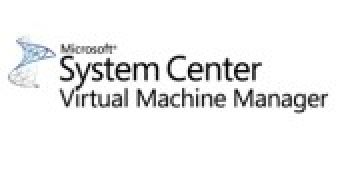Windows Server 2008 R2, Hyper-V, and System Center Virtual Machine Manager are at the core of a new solution available from Microsoft designed to allow third-party companies to create the foundation for private cloud platforms right in their datacenters. Dubbed the Microsoft System Center Virtual Machine Manager Self-Service Portal 2.0, the new offering will be available free of charge, the company confirmed. Early adopters can already get a taste of what VMMSSP 2.0 has to offer, as the solution hit the Release Candidate (RC) stage, and was released at the Worldwide Partner Conference 2010.
“The System Center Virtual Machine Manager Self-Service Portal 2.0 is a free, partner-extensible toolkit that will enable datacenters to dynamically pool, allocate, and manage virtualized resources to enable Infrastructure-as-a-Service. This solution will deliver: tested guidance and best practices to help configure and deploy private cloud infrastructures; automated web portals and infrastructure provisioning engine that’s integrated with System Center; guidance to help partners easily extend functionality,” Microsoft explained.
While System Center Virtual Machine Manager Self-Service Portal 2.0 might be a new label, some customers might already be familiar with the offering, only under a different moniker, the Dynamic Datacenter Toolkit. Microsoft hosting partners have already taken advantage of the Dynamic Datacenter Toolkit for Hosters (DDTK-H), through the Dynamic Datacenter Alliance (DDA) offerings. With the resources mentioned above, service providers can kick up a notch on-premises private clouds, according to Microsoft.
“The self-service portal provides the following features that are exposed through a web-based user interface:
- Configuration and allocation of datacenter resources: Store management and configuration information related to compute, network and storage resources as assets in the VMMSSP database. - Customization of virtual machine actions: Provide a simple web-based interface to extend the default virtual machine actions; for example, you can add scripts that interact with Storage Area Networks for rapid deployment of virtual machines. - Business unit on-boarding: Standardized forms and a simple workflow for registering and approving or rejecting business units to enroll in the portal. - Infrastructure request and change management: Standardized forms and human-driven workflow that results in reducing the time needed to provision infrastructures in your environment. - Self-Service provisioning: Supports bulk creation of virtual machines on provisioned infrastructure through the web-based interface. Helps business units to manage their virtual machines based on delegated roles,” Microsoft added.
Microsoft System Center Virtual Machine Manager Self-Service Portal 2.0 Release Candidate (RC) is available for download here.

 14 DAY TRIAL //
14 DAY TRIAL //